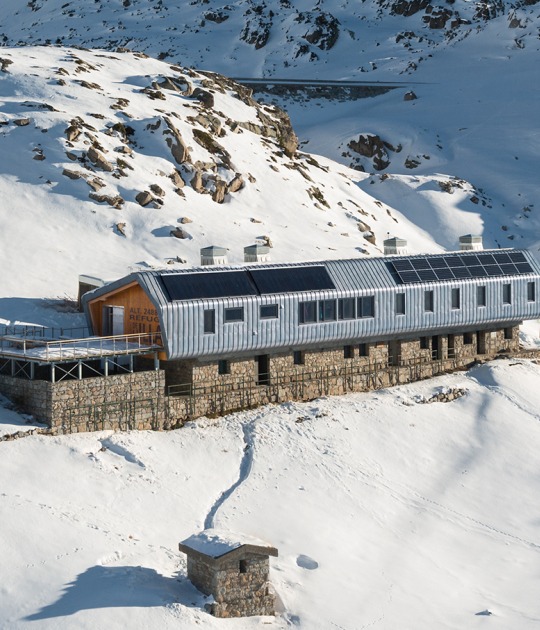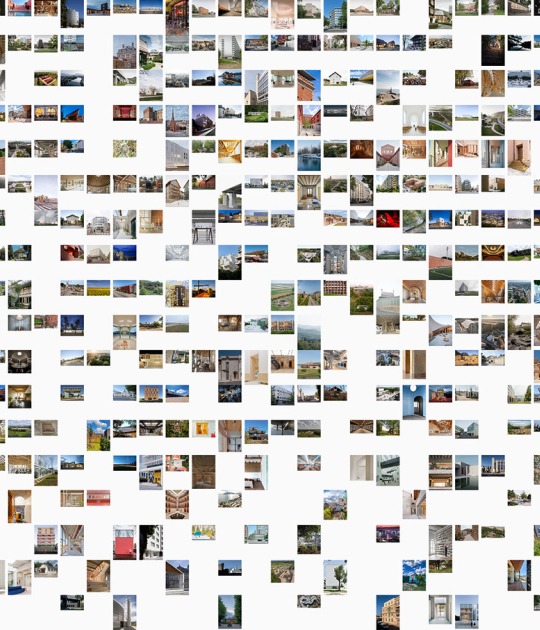The project is part of a reforestation strategy designed to increase biodiversity and integration of the area. In addition, nearby materials were used, such as marble rubble and Lomé mortar from nearby mines, and local workers were hired, thus ending up offering a low-emission solution that creates jobs and reinforces the preservation of traditional crafts.

Third Space by Studio Saar. Photograph by Edmund Sumner.
Project description by Studio Saar
Intended as a «third space», a place without boundaries beyond home or school, local children and people of all ages are encouraged to encounter and explore diverse, hands-on activities to better understand more about the world and their place within it. The new centre can host up to 2,000 visitors a day, offering a broad range of activities and workshops, providing much-needed resources to the people of Udaipur.
Third Space is designed to foster Dharohar’s key principles of openness, accessibility, and inclusivity, resulting in a free, unrestricted space which ignites curiosity, creativity and a sense of community for visitors, volunteers and staff. The new centre features a flexible entrance space for performances and community gatherings, a cinema, performing arts theatre, an interactive exhibition of science and technology, tinkering and maker spaces, workshopping and co-working spaces, a library, a café and retail space, and a lookout tower to take in surrounding views.
Third Space’s activities, programmes and curriculum are connected to 80 hectares of hills that are being rewilded as part of a reforestation project by Dharohar and Studio Saar. The ambitious project will see local flora and fauna returned to the area to increase biodiversity and the integration of both projects will provide further learning opportunities, connecting the community with the local ecosystem that sustains it.

Third Space by Studio Saar. Photograph by Edmund Sumner.
The building’s design draws inspiration from traditional havelis courtyard homes, featuring a central courtyard surrounded by a series of cloisters and shaded external circulation space. The facades feature intricate patterned Jali screens that provide ventilation while connecting the inside to the outside. Small, cantilevered niches in the façades, known as gokhra, act as wind catchers, playing a key role in the building’s passive cooling strategy and doubling as playful alcoves for reading, meeting and relaxing. A curved steel deck weaves around the courtyard and serves as a viewing platform allowing visitors to observe the programme of activities, climbing wall and performance area below. The structure is populated by native trees and planting at multiple levels, aiding with wayfinding, and bringing nature into the heart of the centre.
Cut-outs from the building’s local white marble screenwork and gokhra are used as floor tiles, creating a positive-negative relationship between facades and floors, while cut-outs from the metal screens form chainmail screens and doors. Waste marble rubble and lome mortar from nearby mines form the masonry walls and marble dust replaces some of the cement and sand content in the concrete mix – resulting in a whiter finish that more effectively reflects the sun’s heat.
The roof acts as an adventurous playscape, offering spaces for parkour and skateboarding, and features a woven bamboo canopy to provide solar shading, designed in collaboration with Webb Yates Engineers. Bamboo was chosen for the canopy and local weavers will be employed in its ongoing maintenance, resulting in a low-cost, low-carbon solution that creates steady local employment and reinforces the preservation of a traditional craft.

Third Space by Studio Saar. Photograph by Edmund Sumner.
“Working on Third Space has been an incredibly exciting and rewarding journey. Throughout the design process, we’ve worked closely with Dharohar to develop a space that will appeal to visitors and staff alike. It was a joy to draw inspiration from the architectural heritage of Rajasthan and have the freedom to reimagine it, bringing multiple uses into a single coherent building that will bring joy to the community for years to come.”
Ananya Singhal, Managing Partner of Studio Saar.
“Given the right environment and encouragement, people can unlock their limitless potential. This is the vision of Third Space – a place where people come together, explore new ideas, encourage each other, and shift from being consumers to creators. Studio Saar was able to help us realise this vision and create a space that encourages innovation and connection. We hope as people come together in this space to become life-long learners, they will improve tour city and nation in ways that we cannot yet imagine.”
Shivani Singhal, Head of Dharohar.































































